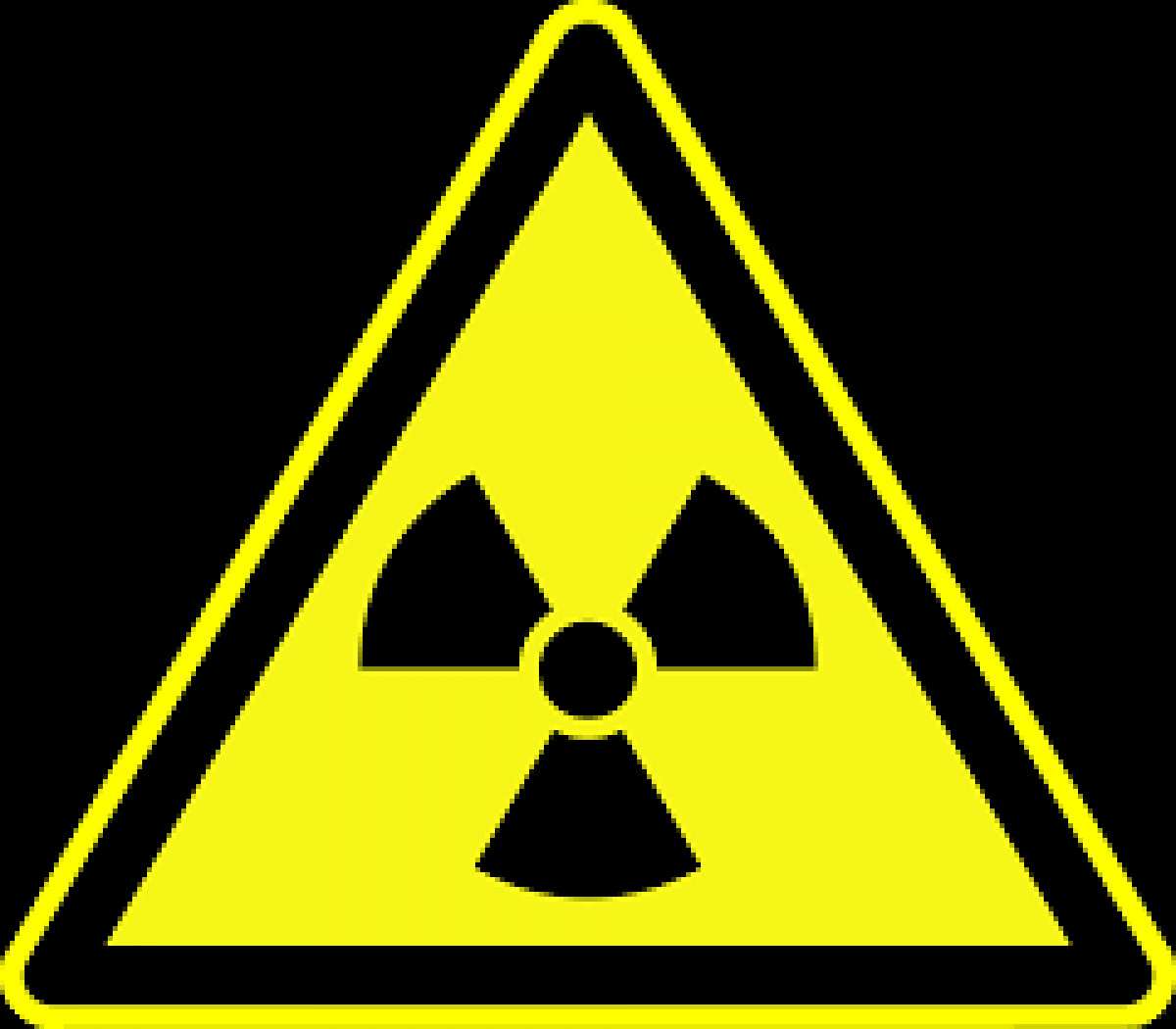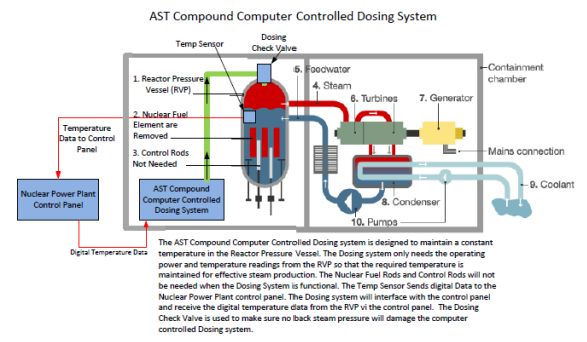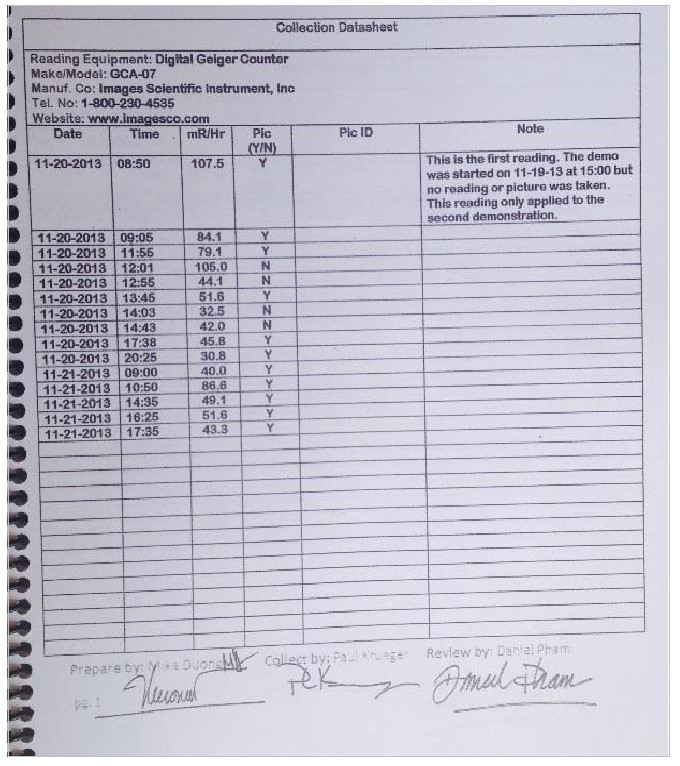Nexxus Project - Radioactive decontamination
Written by Fulmina Institut

The Fukushima nuclear power plant problems of pollution
Daiichi Fukushima nuclear plant has reached a critical stage, and needs attention and immediate action by a set of irrevocable technology solutions.
The nuclear fuel rods of three reactors have melted, releasing the nuclear melted rods in fusion, while releasing temperatures of over 5000 ° C, leading to the "Chinese syndrome". In other words, the melt has pierced all that could be, including container vessels the first and second level are the protection enclosing the reactors.
It was discovered in October 2013, that the heart of Units 1, 2 and 3, had tragically disappeared! Our information shows that each of the molten hearts has all gone through including the first layer of the Earth's crust (made up of sand and rocks). The fusion reactor has penetrated to ground water which are then discharged into the Pacific Ocean.
The first level of analysis shows that some of this fragmented heart has found its way into the ocean trench of Japan at depths of 23.176 feet, or 4.3 miles deep.
The problems
The most knowledgeable experts in the field have identified a path to a solution. The heart of the reactors comes from radioactive fuel rods, have melted into a lavs state; each rod contains about 200 pounds of highly radioactive material that now poisons the Pacific Ocean (for information, the Hiroshima bomb contained 18 pounds ...). Ocean currents have spiraled radioactive waste in every corner of the Pacific, and even further.
The consequences of Fukushima seriously affect aquatic life: we find very large quantities of salmon "sockeye" sensitive to pollution already dead by the thousands. The northwestern region near British Columbia, collected the corpses of 4 whales in the same week, having succumbed to radiation waste that invaded the Pacific ecology . Many corpses of whales were spotted floating on the sea. These phenomena of radioactivity have a devastating effect on all life forms and may be the origins of a movement of uncontrollable mutations or even genetic modification of all life on Earth.
Phytoplankton, is the main source of production of oxygen in the air we breathe. Following the gradual radioactive contamination throughout the Pacific, the renewal of phytoplankton in now in danger; it disappears gradually and dangerously, causing an alarming decline in our oxygen supply necessary for the overall regeneration of our ecosystem. The consequences of this imbalance cannot be established now, but the numbers speak and our life expectancy on the planet is now called into question.
The Solution
We have identified four important phases for radioactive decontamination:
Phase One - The use of thermographic methods (the technic to obtain, by means of suitable equipment, the thermal image of an observed scene in a spectral infrared range) on the ocean surface of the Pacific, to identify the hottest areas and neutralize their harmful effects caused by radioactivity. The reactor cores were fragmented, they were dispersed by ocean currents. We must identify the concentration of radioactive wastes areas and neutralize them.
Phase Two - Treatment of radioactive hearts, polluted water, soil and scattered radioactive tubes.
Phase Three - Dismantling the damaged reactors and other buildings that have suffered irreparable damage.We must also clean and rebalance the biotope soil all over the Fukushima site, and implement a new flora and a new fauna.
Phase Four - Assist and initiate treatment for all those people who have suffered or incurred by poisoning radioactive wastes, both in Japan and the west coasts of the Pacific North American and South Pacific.
Advantages
This solution does not offer sacrifice human life in order to solve this problem. The Chernobyl disaster happened April 26, 1986 in Ukraine, was under the direct authority of the Soviet Union. Thanks to a number of Russian volunteers who were asked to sacrifice their lives to save Europe and the world, the problem was partially halted and momentarily. The project of our team for all practical purpose, is absent of risk, and is conscious and respectful of all life.
Four years have passed since the disaster in Fukushima, Japan and has spent more than 8 billion dollars just to be in a more critical situation. The decisions made to repair Fukushima have compounded the problem. We offer a complete solution that overcomes fragmentation of hearts scattered in the Pacific and treatment of radioactive wastes from soil and water.
The financing requirements of the Fukushima project
The danger caused by this event is significant for Japan and for the ecological stability of the world. Thousands of Japanese lost their lives and we face the consequences of Fukushima radioactivity, which may extend to other parts of the world.
Phase One - the project requires approximately $ 2.5 billion for the cost of heavy equipment and transportation as well as the choice of a workforce of skilled and highly skilled operators and attribute for all workers optimal conditions as well as a premium compensation for this dangerous work.
Phase Two - the project requires approximately $ 4 billion. This phase of the project is to eliminate the generation of radioactive waste in all reactors and their regional environment. This treatment includes the damaged fuel rods, contaminated water in the storage tanks, but also groundwater and soil treatments contained in thousands of bags located on all storage sites. (See PowerPoint presentation - more details).
Phase Three - the project requires approximately $ 3 billion. This phase will renovate the entire site of Fukushima. This will include the dismantling of damaged buildings, but also the regeneration after the decontamination of land and soil so that they can once again generate life and flora.
Phase Four - Radiation at Fukushima escaped from their container vessels, and infiltrated the Pacific and also in the atmosphere. Consequently, the radiation has reached extremely dangerous levels for all life on the planet. All dairy products and the food chain is contaminated. The cumulative effects are going to begin in varying degrees in the population. Bleeding gums, dental disorders which may lead to loss of teeth, chapped skin, thyroid troubles, all these become the first signs of radiation poisoning. We are able to medically assist the Japanese health organizations to help the population to neutralize the effects of this radiation poisoning.
It is estimated that this phase of the project, a sum of $ 2.5 billion is needed to support clinical and provide care technologies needed to neutralize the effects of the poisoning.
Duration
The four phases of the project are made over a period of 4 to 5 years.
The first phase of this project is the denuclearization of the hearts scattered in the Pacific; it is realized in the shortest possible time, once the equipment is delivered and installed.
Phase 2 of the project requires about 15 months, once the material and equipment will be in place for the decontamination of radioactive rods and the cooling waters.
Phase 3 requires about 18 months, depending on the result of the evaluation of the radioactivity of soils and surfaces requiring restoration.
Phase 4 of the project requires constant attention from the start. A clinical observation and monitoring of patients is an ongoing project for several years.
The total cost of restoring amounts approximately to 12 billion US dollars.
Radioactive Waste Decontamination Technologies
Fukushima Daiichi Nuclear Central - Project and MRDC
The Mineral Radioactive Decontamination Compound (MRDC) was tested on 2013/11/19 at Kawamata laboratories, Fukushima, Japan. It is important to note that:
Phase 1 of the project is to find a way to bring the temperature down to a sustainable level after the collapse of reactors 1, 2 and 3.
Phase 2 of the Nexxus project is designed to perform decontamination of radioactive waste in the reactors, in water tanks, in soils and in radioactive rods.
The Mineral Radioactive Decontamination Compound (MRDC) was designed and developed by a team of chemists involved in AST Trust.
The Mineral MRDC compound was successfully tested on samples taken directly into the Fukushima Nuclear Power Plant (FNPP)
All radio nuclides (radioactive atoms which may mutate, become another atom) are decontaminated in 72 hours in the presence of MRDC
All radioactive fuel reactor tubes can be treated and reduced fertilizer NON-toxic material for the use of plants and soil.
The MRDC was designed and developed by AST Trust for worldwide humanitarian application.
AST has tested the compound directly at the Kawamata Laboratories MRDC, on radioactive samples from the Fukushima Nuclear Central site (FNC).
The tests carried out have demonstrated the power of decontamination of radioactive isotopes within 72 hours.
Testing began with soil samples of a radiation level of 107.5 mR / Hr.
After 33 hours and 45 minutes of treatment, the measured radiation of the same soil specimen dropped to 43.3 mR / Hr.

Extract of the data pages :
The measurements were performed on: Digital Geiger Counter, Brand and Model Manufacturer:
Images Scientific Instruments Inc., Model GCA-07
Fact Sheet : Measurement of Radioactive Radiation - soil specimens in Fukushima

The MRDC Compound of AST Corporation
The MRDC compound of the AST company is a mineral mixture that was conceived for cold fusion. It may also be used in other ways to replace the fuel rods in the nuclear reactors central, without causing any changes in the design of the reactor. They can be replaced "mutatis mutandis" by this unique AST compound, having the ability to boil water to produce steam which will power the turbines. The specific feature of this compound is that it creates no radioactive waste during operation.
This product has shown its viability: tests date back to 19 November 2013. This MRDC compound is a high-level decontamination technology for all environments and radioactive waste.
Indeed, the biggest challenge caused by radioactive waste is that it is very difficult to prevent them from spreading in nature. They sneak inevitably throughout the immediate environment and upset the ecology. There are ways to slow down the infiltration and contamination process, but the reality of the Winger effect will, on the long-term, end up poisoning us, and modify our genome.
The MRDC compound is a viable solution for the prevention and treatment of radioactive waste disposal.
Another decontamination technology of radioactive waste for all production sites.
The JTube is a technology for the disposal of radioactive waste. Its effectiveness can be seen within 30 minutes. The Frequential Technology based on hydrogen atoms has the most effective features for the removal of radioactivity. This technology has unique properties that should be emphasized.
JTube has a "Self Rechargeable " battery so you do not have to be plugged to make it autonomous.
It consists of a frequency-algorithm stored on a particular intermediate support composed of magnetite.
The frequencies stored in the JTube can be broadcasted over a large area. Measurement readings demonstrated an effective decontamination over a distance of 75 miles.
JTube is also used as protection as a "protective bubble" when we are in the presence of radioactive emission.
This technology can be attached to buoys on the ocean surface to eliminate radiation and restore the ecosystem (water pollution control).
Although the JTube mode of production requires a very slow and meticulous skilled hand. The production of this tool can be industrial but requires a significant investment.
The scientific team of the Nexus project
Non-exhaustive list :
Stephan Venczel – Chief executive of the project
Dennis S. Watts - former NASA Project Manager and Engineer Systems / Planning (ISS / Space Shuttle)
RA Europe, Engineering, Test and Deployment - Advisor and Consultant
Dr. Michael Levi PhD.- Consultant and Project Planner
Dr. Jeffery Prystupa DC Expert in Health and Healing
Dr. Stephen Palmer PhD. MD. JD. - Advisor and Consultant
Mr. Denis S. Watts Research and Development
Department of Science and Engineering – Overview
The objective
The goal of the Department of Science and Engineering is to build laboratories with the purpose of developing leading support for a team of engineers and technicians who will face all kinds of environmental challenges; provide the database for the work which do represent a danger and those that are not dangerous; to be in analysis support of any new technology associated with the environment ; to support integration and test the validity.
The Environment Laboratory
The Environment Laboratory will be used for storage of material samples that require laboratory tests in chemistry and mechanics. The Environment Laboratory lodge the cultures of various species of useful bacterias in the decontamination of radioactive waste, on land oil and sea spills. The laboratory is used for the support of field engineers to provide them with the latest informations on temperatures and other environmental conditions, in order to ensure their safety during the work period. This department is crucial especially when the work is done on sites like the Fukushima Nuclear Power Plant.
The Chemistry Laboratory
The Chemistry Laboratory, will be used for research and development of compounds of specific chemicals, such as HHO gas, or Brown gas that can be used for decontamination of radioactive waste or cleaning of land and sea oil spills, as well as problems related to water bodies. This lab is also used for testing and identification of specimens collected from the contaminated site, to make them more productive in finding solutions necessitated by the challenges presented to them. This laboratory is instrumental in the assessment of specific chemical compounds and/or gases that are showing nontoxicity to healthy living environment. This is mainly the case on sites such as nuclear power plant in Fukushima.
The Mechanics Laboratory
The Mechanics Laboratory is used in many processes of Nexxus project. It is used in the integration, testing, research and development of advanced ideas proposed as solutions to environmental problems. It is also used for the evaluation of new technologies for the architectural engineering support for health goals and healing techniques needed to support engineers and project workers in the field. It will also support Structure Engineering consultants, attending the decontamination of damaged structures, such as buildings containing reactors at the Fukushima nuclear power plant which have been the subject of explosions. The structure Engineers will be asked to draw the security action plan, once an area has been declared healthy, following the decontamination of waste still present in three or four reactors damaged by explosions.
The field engineers supervise the environmental decontamination process and will use the Mechanics Laboratory to solve problems on the ground, and ensure that these engineers have the necessary resources to conduct effective decontamination. This laboratory will also proceed in mechanical evaluation of of any kind that will be made necessary in their functions for decontamination.
The High End Advanced Physical Science Laboratory
Physics advanced laboratory is a place of integration of the different systems where different mechanical, electromechanical, electrical and electromagnetic components are tested and integrated. Research and development of hardware and software are performed by the laboratory. Similarly, Design Development, Test Evaluation (DDT & E) of new technologies developed by Nexxus project are carried out by the laboratory for evaluation and deployment in the field, to be used by engineers and technicians in the decontamination work. The challenges, mainly in Fukushima, are numerous, by the accumulation in recent years to such a degree of radioactive waste, it is difficult to assess the extent of damage until that evaluation report has been completed. The staff of the Department of Science and Engineering is a major asset to ensure the safety of employees and engineers, by collecting all data from space satellites, such as observing the temperature, the thermographic data oceans and its currents. Engineering data are of incalculable value in order to ensure complete security for engineers and technicians, so that they do not venture into high risk areas. They should be informed of the border areas and all weather considerations.
Safety is the first priority. Keep personnel safe and out of danger is an extreme task for all concerned. Each of these four laboratories work closely together to ensure the necessary safety of all personnel.
The Department of Transport and Logistics – Overview
The Objective
This department aims to provide the transportation to the equipment and personnel on the various operating sites. This includes intermediate storage for supplies classified as "Just-in-Time" to the various operating sites.
The nuclear fuel rods of these three reactors have melted, releasing the nuclear melt, it reaches temperatures of over 5000 ° C, leading to the "Chinese syndrome": In other words, the melt has pierced all that could be, including container vessels on the first and second level which are the protection enclosing the reactors.
Copyright Fulmina Foundation
Powered by Froala Editor
